Identification of 12/15-lipoxygenase as a suppressor of myeloproliferative disease
- PMID: 17043146
- PMCID: PMC2118138
- DOI: 10.1084/jem.20061444
Identification of 12/15-lipoxygenase as a suppressor of myeloproliferative disease
Abstract
Though Abl inhibitors are often successful therapies for the initial stages of chronic myelogenous leukemia (CML), refractory cases highlight the need for novel molecular insights. We demonstrate that mice deficient in the enzyme 12/15-lipoxygenase (12/15-LO) develop a myeloproliferative disorder (MPD) that progresses to transplantable leukemia. Although not associated with dysregulation of Abl, cells isolated from chronic stage 12/15-LO-deficient (Alox15) mice exhibit increased activation of the phosphatidylinositol 3-kinase (PI3-K) pathway, as indicated by enhanced phosphorylation of Akt. Furthermore, the transcription factor interferon consensus sequence binding protein (ICSBP) is hyperphosphorylated and displays decreased nuclear accumulation, translating into increased levels of expression of the oncoprotein Bcl-2. The ICSBP defect, exaggerated levels of Bcl-2, and prolonged leukemic cell survival associated with chronic stage Alox15 MPD are all reversible upon treatment with a PI3-K inhibitor. Remarkably, the evolution of Alox15 MPD to leukemia is associated with additional regulation of ICSBP on an RNA level, highlighting the potential usefulness of the Alox15 model for understanding the transition of CML to crisis. Finally, 12/15-LO expression suppresses the growth of a human CML-derived cell line. These data identify 12/15-LO as an important suppressor of MPD via its role as a critical upstream effector in the regulation of PI3-K-dependent ICSBP phosphorylation.
Figures
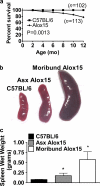
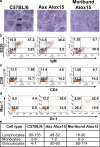
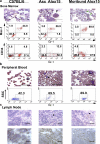
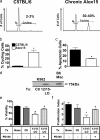

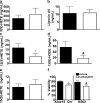
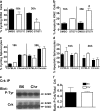
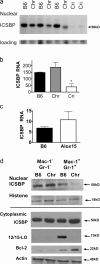
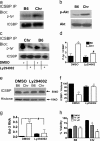

Comment in
-
Oncogenic signaling: new insights and controversies from chronic myeloid leukemia.J Exp Med. 2007 Mar 19;204(3):461-5. doi: 10.1084/jem.20062335. Epub 2007 Mar 12. J Exp Med. 2007. PMID: 17353369 Free PMC article. Review.
References
-
- Kantarjian, H., J.V. Melo, S. Tura, S. Giralt, and M. Talpaz. 2000. Chronic myelogenous leukemia: disease biology and current and future therapeutic strategies. Hematology (Am. Soc. Hematol. Educ. Program). 2000:90–109. - PubMed
-
- Wertheim, J.A., J.P. Miller, L. Xu, Y. He, and W.S. Pear. 2002. The biology of chronic myelogenous leukemia: mouse models and cell adhesion. Oncogene. 21:8612–8628. - PubMed
-
- Cohen, M.H., J.R. Johnson, and R. Pazdur. 2005. U.S. Food and Drug Administration Drug Approval Summary: conversion of imatinib mesylate (STI571; Gleevec) tablets from accelerated approval to full approval. Clin. Cancer Res. 11:12–19. - PubMed
-
- Hochhaus, A., and T. Hughes. 2004. Clinical resistance to imatinib: mechanisms and implications. Hematol. Oncol. Clin. North Am. 18:641–656 (ix.). - PubMed
-
- Michor, F., T.P. Hughes, Y. Iwasa, S. Branford, N.P. Shah, C.L. Sawyers, and M.A. Nowak. 2005. Dynamics of chronic myeloid leukaemia. Nature. 435:1267–1270. - PubMed
Publication types
MeSH terms
Substances
Grants and funding
LinkOut - more resources
Full Text Sources
Molecular Biology Databases
Miscellaneous

